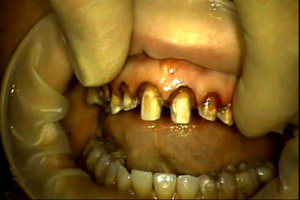Learn From the Dental Industry's TOP LEADERS!
Sit Chairside withDr. Dennis WellsCreator ofDURAthin® Prepless Veneers- OR -
|
Complex Aesthetic Restorative Dentistry Part I (Tetracycline Case)
DescriptionThe not so typical, typical case. Does this sound familiar? A patient walks in the door with esthetically compromised dentistry, which has failed due to time or simply poor dentistry. The patient has deep tetracycline stains and you have no idea what you are going to find once you remove the old restorations.This is a far more typical patient than the perfect candidate we are use to seeing lectures talk about. This first of a two part program closely examines every step in the records, impression, prep and temporaries phase.While dentists strive for minimal or no prep dentistry, Dr. Kirtley discusses why this is especially important in previously prepped teeth. This course will also look at the importance of documentation and cover the AACD photography requirements. Additionally, you will learn a new way to get a great first impression utilizing both a heavy body and light body material. He also discusses why the preps will be subgingival on the facial and interproximal areas and why he cuts through the lingual to insure the lab has enough room to mask the color below. Flexibility in dentistry is a critical skill and you will see how Dr. Kirtley handles every curve ball thrown at him to create a smile design that the patient is excited about. AGD Subject Code: 254 Last Reviewed: 01/18/2016 Disclaimer: No commercial support was recieved for this program. Objectives
OutlineI. Case Presentation: Tetracycline stained teeth and compromised past dental work. II. AACD photo series III. A unique way to take impressions. IV. Preparation V. Records. VI. Fabrication of temporaries. VII. Contouring temporaries. ReferencesKirtley, George. Esthetic Restoration of the Anterior Edentulous Area. Contemporary Esthetics and Restorative Practice Magazine. 2002, July. Related Courses
Course Images
The HDiQ slideshow requires Adobe Flash player 9 and JavaScript.
|
 Submitting...
Submitting...


 FAGD/MAGD Credit Approval does not imply acceptance by a state or provincial board of dentistry or AGD endorsement 7/31/2018 to 7/31/2021 Provider ID# 317928
FAGD/MAGD Credit Approval does not imply acceptance by a state or provincial board of dentistry or AGD endorsement 7/31/2018 to 7/31/2021 Provider ID# 317928